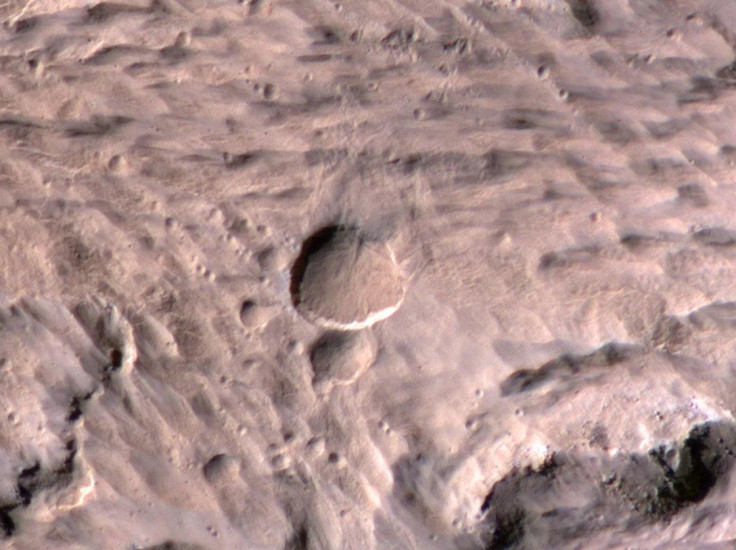NASA Discovers New And ‘Unusual’ Impact Crater On Mars [VIDEO]

A NASA satellite orbiting Mars recently discovered a fresh crater on the surface of the Red Planet, and scientists were able to pinpoint the exact day the impact occurred.
The crater is located near the planet’s equator and measures roughly 49 meters, or 160 feet, across, about half the size of a football field.
Before and after shots of the impact site, taken in March 2012 with the Mars Color Imager, or MARCI, show that the crater was not there on March 27, but it appeared the following day. The anomaly wasn’t spotted until a few months ago when a NASA scientist who charts weather patterns on Mars noticed a dark spot on the planet's surface that had not been observed previously.
Mars is constantly bombarded with objects from space, but this is the first time scientists have pinpointed the exact day a meteorite struck the Red Planet. Scientists say it’s an important step in understanding the Martian surface.
"Studies of fresh impact craters on Mars yield valuable information about impact rates and about subsurface material exposed by the excavations," Leslie Tamppari, deputy project scientist for the Mars Reconnaissance Orbiter mission at NASA's Jet Propulsion Laboratory in Pasadena, California, said in a statement.
Because of Mars’ thin atmosphere, large chunks of rock frequently survive until until impact. Scientists have witnessed no less than 20 new large craters on the surface of Mars over a seven-year period. On Earth, meteors seldom make it to the ground as they explode in the upper atmosphere, where most if not all of the solid material is vaporized.
"If you were to live on Mars for about 20 years, you would live close enough to one of these events to hear it," Michael Malin, chief scientist at Malin Space Science Systems in San Diego, said in 2006 about a study he led that looked at new Mars impact craters over a five-month period. "So there'd be a big boom, and you'd know there was an impact crater."
In February, NASA released images of an impact crater on Mars that were captured by the Mars Reconnaissance Orbiter, or MRO. The images show an impact crater that's roughly 30 meters, or 100 feet, in diameter with dark bands of material radiating outward from the crater.
NASA estimates that the meteor that created the 49-meter-wide crater on Mars in 2012 was 3 to 5 meters long, less than a third the estimated length of the asteroid that exploded above Chelyabinsk, Russia, in February 2013.
Researchers say the crater is unlike any they’ve seen before.
"The biggest crater is unusual, quite shallow compared to other fresh craters we have observed," Alfred McEwen of the University of Arizona, Tucson, said in a statement.
Here’s a video, courtesy of NASA, that shows the before and after images of the impact site:
© Copyright IBTimes 2024. All rights reserved.






















